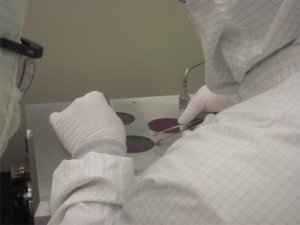Academia: Radiation in the THz range
With my college career coming to an end, I decided to start a series of posts entitled “Academia”. In each post, I will discuss a project or research I have been involved in.
In this first post of the series, I will briefly discuss my research in terahertz generation. In the spring of 2007, I had the distinct honor of working under Professor Leon McCaughan, a professor in the department of Electrical and Computer Engineering at the University of Wisconsin – Madison. Under his supervision, I studied the properties of:
- Guided wave photonic devices and circuits
- Quantum optics
- Far infrared (terahertz) generation and spectrocopy
- Waveguide and photonic crystal theory
More importantly, I had the opportunity to take part in one of his research projects and work along side of other extremely talented students and researchers . A description of the project:
“Terahertz (THz) radiation is of great current interest for imaging science and technology. Applications include time-domain spectroscopy (e.g., the dielectric response of molecules in the far infrared), medical imaging in a new radiation band, detection and imaging for homeland security and defense applications, as well as communications.”
Within the project, I spent many hours in the Wisconsin Center for Applied Microelectronic Devices developing photolithography and reactive ion etching techniques to produce a THz photonic crystal in Silicon. By creating this photonic cystal, we were attempting to create a control in order to provide tunablity to the light source. Prior to the fabrication of the 2D crystal, we also undertook some computer-based model calculations.
Pictures from the research here:
Picture of 2D photonic crystals.
Myself and two of my colleagues in the lithography bay.
Description of the project (can be found on www.nsf.gov)
Thank you to Professor Leon McCaughan for a truley invaluable experience!


